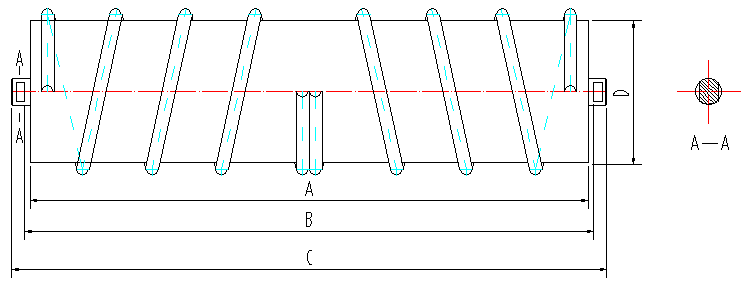 Afrikaans
Afrikaans  Albanian
Albanian  Amharic
Amharic  Arabic
Arabic  Armenian
Armenian  Azerbaijani
Azerbaijani  Basque
Basque  Belarusian
Belarusian  Bengali
Bengali  Bosnian
Bosnian  Bulgarian
Bulgarian  Catalan
Catalan  Cebuano
Cebuano  Corsican
Corsican  Croatian
Croatian  Czech
Czech  Danish
Danish  Dutch
Dutch  English
English  Esperanto
Esperanto  Estonian
Estonian  Finnish
Finnish  French
French  Frisian
Frisian  Galician
Galician  Georgian
Georgian  German
German  Greek
Greek  Gujarati
Gujarati  Haitian Creole
Haitian Creole  hausa
hausa  hawaiian
hawaiian  Hebrew
Hebrew  Hindi
Hindi  Miao
Miao  Hungarian
Hungarian  Icelandic
Icelandic  igbo
igbo  Indonesian
Indonesian  irish
irish  Italian
Italian  Japanese
Japanese  Javanese
Javanese  Kannada
Kannada  kazakh
kazakh  Khmer
Khmer  Rwandese
Rwandese  Korean
Korean  Kurdish
Kurdish  Kyrgyz
Kyrgyz  Lao
Lao  Latin
Latin  Latvian
Latvian  Lithuanian
Lithuanian  Luxembourgish
Luxembourgish  Macedonian
Macedonian  Malgashi
Malgashi  Malay
Malay  Malayalam
Malayalam  Maltese
Maltese  Maori
Maori  Marathi
Marathi  Mongolian
Mongolian  Myanmar
Myanmar  Nepali
Nepali  Norwegian
Norwegian  Norwegian
Norwegian  Occitan
Occitan  Pashto
Pashto  Persian
Persian  Polish
Polish  Portuguese
Portuguese  Punjabi
Punjabi  Romanian
Romanian  Russian
Russian  Samoan
Samoan  Scottish Gaelic
Scottish Gaelic  Serbian
Serbian  Sesotho
Sesotho  Shona
Shona  Sindhi
Sindhi  Sinhala
Sinhala  Slovak
Slovak  Slovenian
Slovenian  Somali
Somali  Spanish
Spanish  Sundanese
Sundanese  Swahili
Swahili  Swedish
Swedish  Tagalog
Tagalog  Tajik
Tajik  Tamil
Tamil  Tatar
Tatar  Telugu
Telugu  Thai
Thai  Turkish
Turkish  Turkmen
Turkmen  Ukrainian
Ukrainian  Urdu
Urdu  Uighur
Uighur  Uzbek
Uzbek  Vietnamese
Vietnamese  Welsh
Welsh  Bantu
Bantu  Yiddish
Yiddish  Yoruba
Yoruba  Zulu
Zulu conveyor side guide
Understanding Conveyor Side Guides Importance and Functionality
Conveyor systems are an essential part of countless industries, offering efficient movement of materials and products. Among the various components that contribute to the effective operation of these systems, conveyor side guides play a crucial role. This article will explore the importance of side guides, their functionality, types, and best practices for their implementation.
What are Conveyor Side Guides?
Conveyor side guides are accessories that help to keep products or materials centered on the conveyor belt as they move from one point to another. These guides are typically installed along the sides of a conveyor system and serve to prevent items from drifting off the belt, ensuring smooth and uninterrupted operation. Whether in a packaging line, assembly area, or distribution center, side guides are integral to maintaining the efficiency of conveyance processes.
Importance of Side Guides
The primary function of conveyor side guides is to enhance the efficiency and safety of conveyor operations. By preventing materials from slipping off the sides of the belt, side guides reduce the chances of product damage and loss, ensuring that goods reach their destination intact. Additionally, side guides help in minimizing workplace accidents by keeping materials contained, reducing the risk of employees tripping over stray items that may fall off the conveyor.
Moreover, side guides contribute to the smooth flow of operations. In environments where products of varying sizes are being transported, adjustable side guides can adapt to accommodate different dimensions, making the conveyor system versatile and functional across numerous applications. This adaptability is particularly valuable in industries such as food processing, packaging, and automotive where production runs may frequently change.
Types of Side Guides
There are several types of conveyor side guides, each designed to meet specific operational needs
1. Fixed Guides These guides are stationary and are typically used for consistent product sizes. They ensure a set path for standard items without the need for adjustments.
conveyor side guide

2. Adjustable Guides These can be customized according to the width of the product being transported. Adjustable guides are ideal for systems that handle varying product sizes and require flexibility.
3. Cushioned Guides These guides feature a soft material that provides additional support and protection for delicate items, minimizing the risk of damage.
4. Guide Rails These extend higher than standard guides and can provide more robust support for larger or heavier items, particularly in high-speed conveyor systems.
Best Practices for Implementation
To maximize the effectiveness of conveyor side guides, consider these best practices
- Regular Maintenance Inspect side guides regularly for wear and tear. Damaged guides can undermine their effectiveness, and timely replacement is crucial.
- Proper Installation Install side guides according to manufacturer specifications to ensure they function correctly. Improper installation can lead to misalignment and decreased performance.
- Adaptability Whenever possible, choose adjustable side guides to accommodate a wide range of products. This flexibility can save time and enhance operational efficiency.
- Material Selection Select side guides made from durable materials that can withstand the specific conditions of your operational environment, such as temperature changes or exposure to chemicals.
In conclusion, conveyor side guides are indispensable components that enhance the efficiency, safety, and adaptability of conveyor systems. By understanding their importance and implementing best practices, industries can significantly improve their productivity and operational reliability. Investing in the right side guide solutions can lead to smoother processes and a safer work environment, ultimately supporting business growth and success.
-
Revolutionizing Conveyor Reliability with Advanced Rubber Lagging PulleysNewsJul.22,2025
-
Powering Precision and Durability with Expert Manufacturers of Conveyor ComponentsNewsJul.22,2025
-
Optimizing Conveyor Systems with Advanced Conveyor AccessoriesNewsJul.22,2025
-
Maximize Conveyor Efficiency with Quality Conveyor Idler PulleysNewsJul.22,2025
-
Future-Proof Your Conveyor System with High-Performance Polyurethane RollerNewsJul.22,2025
-
Driving Efficiency Forward with Quality Idlers and RollersNewsJul.22,2025





























